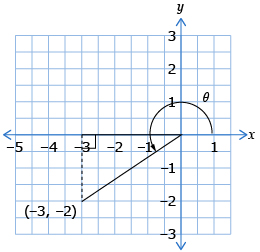Read “Example 5” on page 200 in the textbook. Note the following while reading.

![]()
You have looked at finding trigonometric ratios when given a point on the terminal arm of an angle in standard position. How can you determine trigonometric ratios when only given an angle?
In Mathematics 20-1 you used reference triangles of 30°-60°-90° or 45°-45°-90° to help determine the exact values for trigonometric ratios for multiples of these angles. The unit circle can assist you in determining the exact values for trigonometric ratios as well. You will determine six different trigonometric ratios for angles measured in degrees and radians.